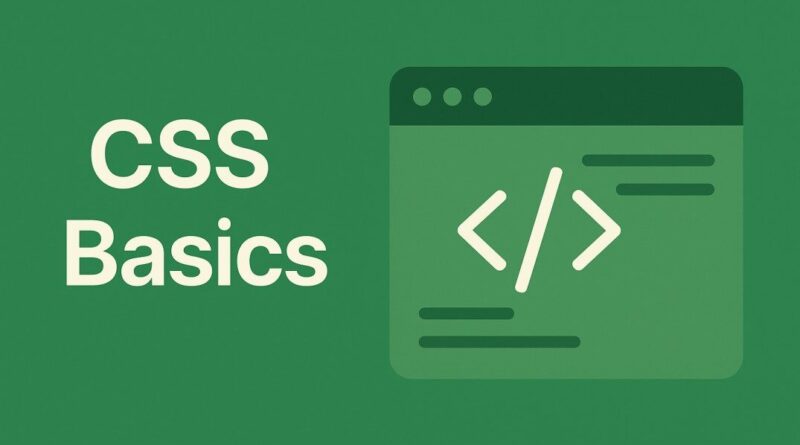CSS – Unraveling CSS Specificity: Why Your Styles Sometimes Don’t Stick!
Unraveling CSS Specificity: Why Your Styles Sometimes Don’t Stick!
Ever scratched your head wondering why a CSS style you wrote isn’t applying, even though it looks perfectly correct? You’re not alone! This common web development puzzle often comes down to a core CSS concept called Specificity. Think of it as a hidden ranking system that browsers use to decide which styles to apply when multiple rules try to style the same element.
Understanding specificity is like unlocking a secret superpower in your CSS journey. It helps you debug styling issues faster and write more predictable, maintainable code. Let’s dive in!
The CSS Style Showdown: Who Wins?
Imagine you have a single paragraph of text, and several different CSS rules are trying to give it a color. How does the browser choose? It consults the “specificity hierarchy.” This hierarchy is like a set of VIP passes, with some passes granting more authority than others.
Here’s the pecking order, from most powerful to least:
- Inline Styles (The VIP Pass!): When you apply a style directly within the HTML tag using the
styleattribute (e.g.,<p style="color: blue;">). These are super-strong because they’re right there on the element.- Think of it like: Shouting your order directly to the chef – no one else can override it easily.
- IDs (The Exclusive Club Member): Styles applied to elements using their unique
idattribute (e.g.,#myParagraph { color: red; }). An ID should only be used once per page, making it very specific.- Think of it like: Having a reserved table at a popular restaurant – only you get that specific spot.
- Classes, Attributes, and Pseudo-classes (The Well-Organized Groups):
- Classes: Styles applied to elements using a
classattribute (e.g.,.highlight { color: green; }). Elements can have multiple classes, and multiple elements can share the same class. - Attributes: Styles based on an element’s attribute (e.g.,
[type="text"] { border: 1px solid gray; }). - Pseudo-classes: Styles applied when an element is in a specific state (e.g.,
:hover,:focus,:first-child). - Think of it like: Groups of friends with special discounts – good, but not as exclusive as the VIPs or club members.
- Classes: Styles applied to elements using a
- Elements and Pseudo-elements (The General Population):
- Elements: Styles applied directly to an HTML tag (e.g.,
p { color: purple; }). These are the broadest rules. - Pseudo-elements: Styles applied to specific parts of an element (e.g.,
::before,::after,::first-letter). - Think of it like: Public service announcements – they apply to everyone, but can be easily overridden by more specific instructions.
- Elements: Styles applied directly to an HTML tag (e.g.,
Calculating Specificity Values: It’s Not as Scary as It Sounds!
While you don’t need to memorize exact numbers, understanding how specificity is “calculated” helps demystify things. Imagine a four-digit number like 0-0-0-0. Each digit represents a category:
- Digit 1 (Inline Styles): Add
1for every inline style. - Digit 2 (IDs): Add
1for every ID selector. - Digit 3 (Classes, Attributes, Pseudo-classes): Add
1for every class, attribute selector, or pseudo-class. - Digit 4 (Elements, Pseudo-elements): Add
1for every element selector or pseudo-element.
Example Time!
p { color: purple; }=0-0-0-1(one element).highlight { color: green; }=0-0-1-0(one class)#myParagraph { color: red; }=0-1-0-0(one ID)<p style="color: blue;">=1-0-0-0(one inline style)
The rule with the highest number wins! So, 1-0-0-0 (inline) always beats 0-1-0-0 (ID), and so on.
The !important Rule: Use with Extreme Caution!
You might stumble upon !important (e.g., color: orange !important;). This declaration is like the ultimate trump card. It overrides any other specificity rule, even inline styles!
Why use it sparingly? Because it breaks the natural flow and predictability of the CSS cascade. It makes your styles incredibly hard to override later, leading to “specificity wars” and messy code that’s a nightmare to maintain. Think of it as a last resort for truly exceptional cases, not a regular tool.
Mastering Specificity: Your Path to Cleaner CSS!
By grasping the concept of specificity, you’ll:
- Write More Predictable CSS: You’ll know why certain styles are being applied (or not!).
- Debug Faster: Pinpoint styling conflicts quickly and efficiently.
- Create Maintainable Code: Avoid relying on
!importantand build a more robust stylesheet.
So next time your CSS isn’t behaving, take a moment to consider the specificity of your rules. It’s a fundamental concept that will empower you to become a more confident and effective web developer!



